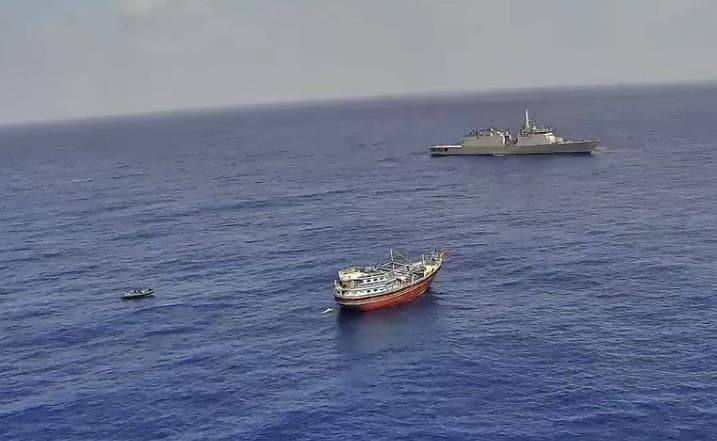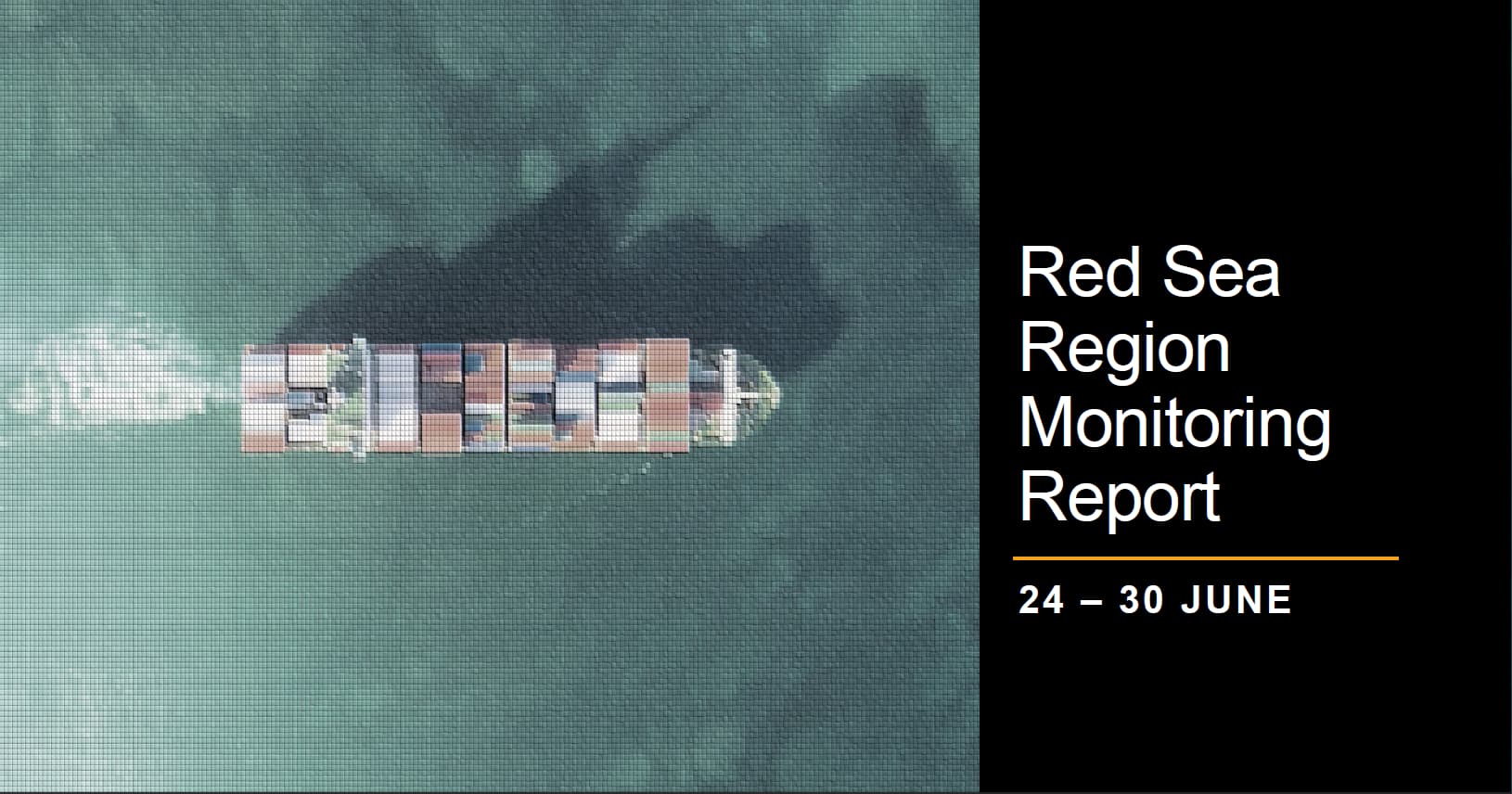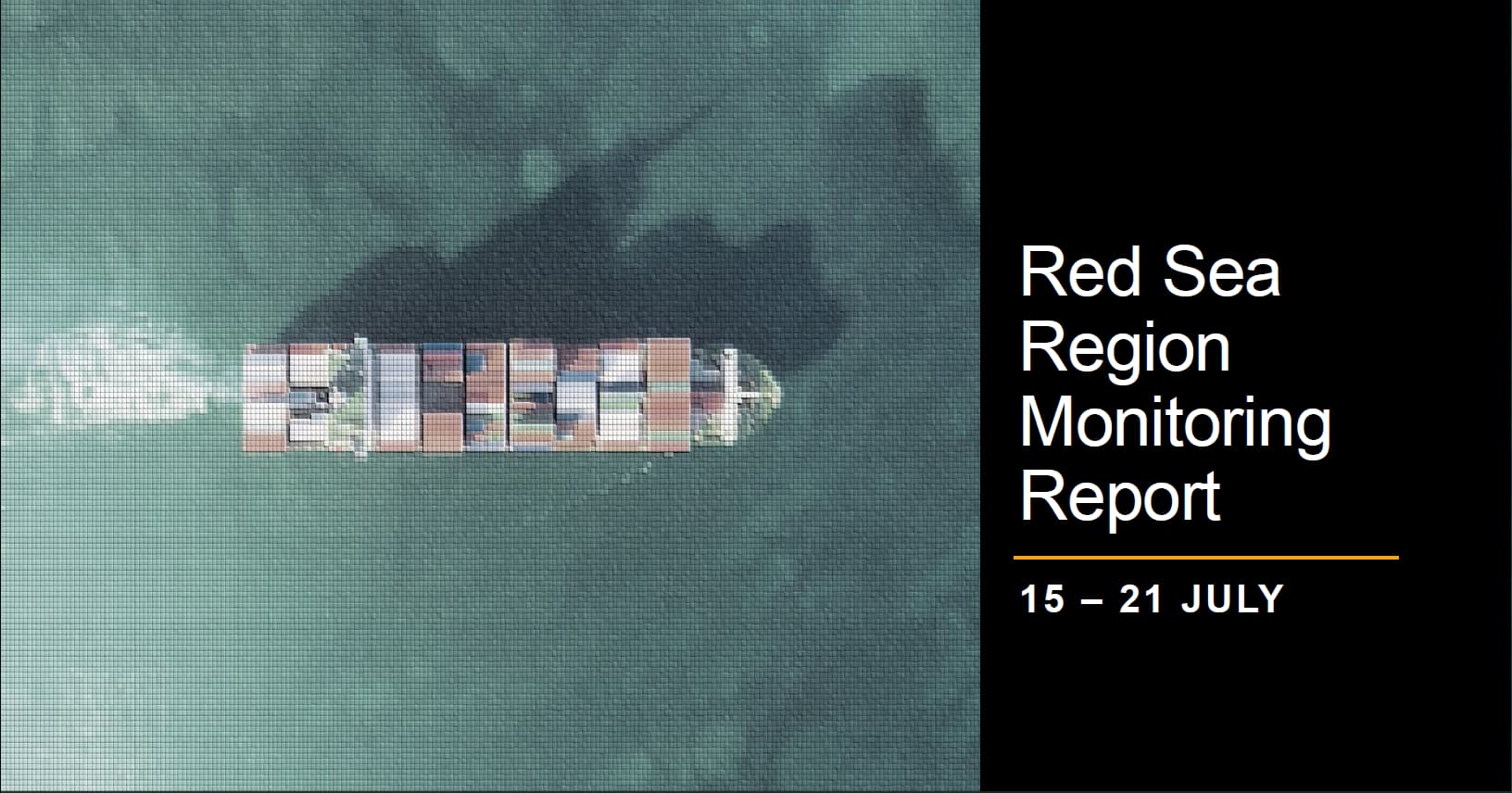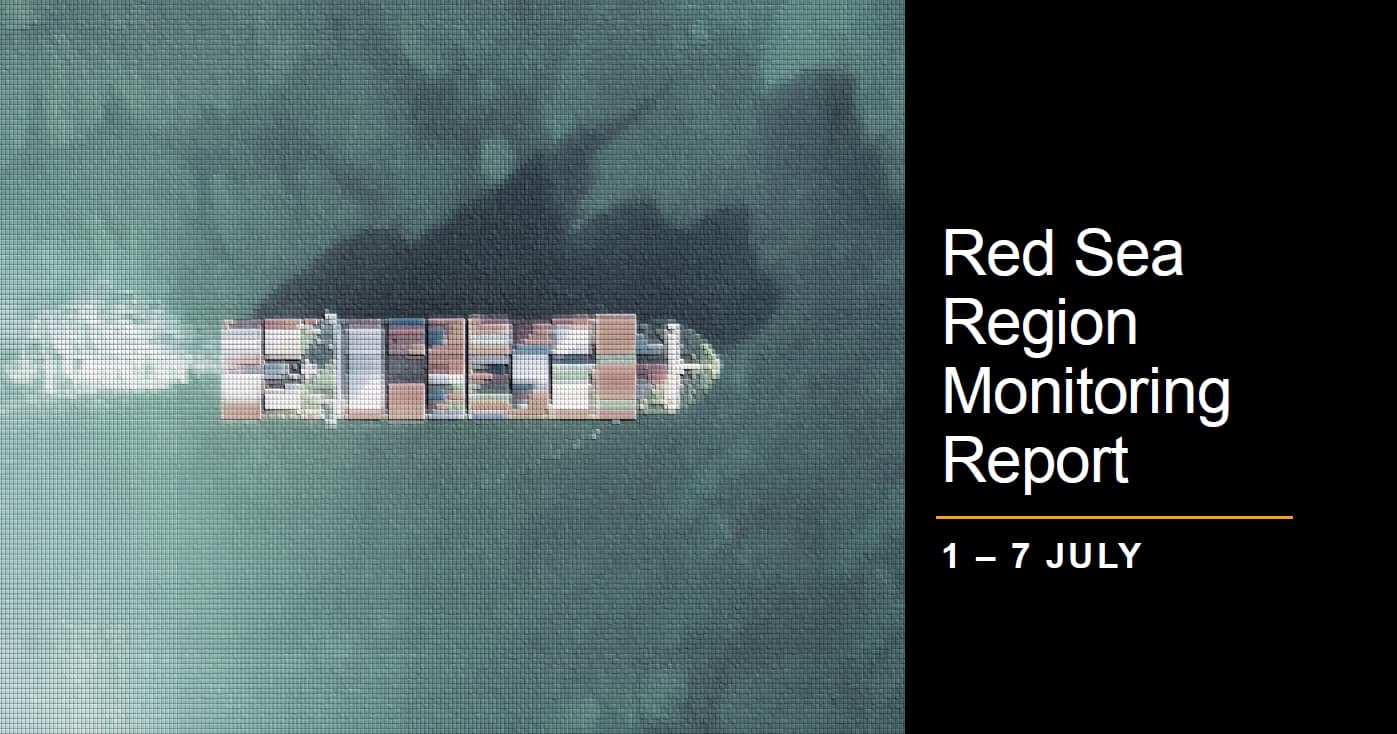KEY DEVELOPMENTS – COMMERCIAL INCIDENTS
During the monitoring period 25-31 March Regal Maritime Solutions (RMS) identified the following incidents in the Red Sea and Gulf of Aden region:
There have been no reported incidents involving Houthi attacks on commercial vessels in the Red Sea region over the reporting period.
PIRACY INCIDENT: On 28 March, approximately 80NM south west of Yemeni island of Socotra and off the Somali coast the FV Al-Kamber 786 was boarded by nine armed individuals of a Pirate Action Group (PAG), who seized the Iranian fishing vessel along with 23 of its crew. The vessel was subsequently intercepted by the Indian Navy’s INS Sumedha and INS Trishul resulting in the PAGs surrender. The vessel and its 23 Pakistani crew were safely rescued and later escorted to a safe area were the vessel continued resuming its fishing activities.


KEY DEVELOPMENTS – MILITARY ACTIVITY
During the monitoring period 25-31 March RMS identified the following incidents involving US coalition forces in the Red Sea and Gulf of Aden region, obtained from military and open sources:
UAV INTERCEPT: On 27 March, between 0200 and 0220 local time, US forces engaged and destroyed four long-range unmanned aerial vehicles (UAVs) launched by Houthi militants in Yemen. US forced identified the UAVs as directed towards a US navy warship in the Red Sea, and therefore deployed assets in self-defence. There were no injuries or damage reported to US or coalition ships.
UAV INTERCEPT: On 28 March between 0600 and 2300 local time, the US navy engaged and destroyed four unmanned aerial vehicles (UAVs) targeting coalition warships in the region after identifying they had been launched Houthi militants in Yemen and therefore presenting an imminent threat to vessels in the region. There were no injuries or damage reported to US or coalition ships.
UAV INTERCEPT: On 30 March at approximately 0830 local time US forces conducted pre- emptive and self-defence strikes on two unmanned aerial vehicles (UAVs) in Houthi-controlled areas of Yemen. The first UAV was engaged and destroyed over the Red Sea, whilst the second was engaged on the ground as it was being prepared to launch.
KEY DEVELOPMENTS – HOUTHI MISSILE STATISTICS

Figures 1 and 2 identifies the number of missiles, UAV, USVs and UUVs launched, or prepared to be imminently launched, by Houthi militants from Yemen targeting both commercial and naval vessels in the Red Sea and Gulf of Aden regions from open source data available. Both figures have incorporated statistics from vessels hit, near misses and pre-emptive strikes on-land in Yemen by US-led Coalition forces but not those resulting from large scale coordinated military action. In some cases the destined target of Houthi weapons including destroyed on-land in Yemen cannot not be verified and has therefore been categorised as ‘Not Known’ (NK). Where no dates are provided there were no reported incidents or data available for that period.
KEY DEVELOPMENTS – SECURITY INCIDENT MAPPING


REGIONAL DEVELOPMENTS
During the monitoring period 25-31 March RMS identified the following key regional developments:
Houthi media claimed US and UK jets carried out a strike on Al-Qutaynat in Saada’s Baqoum area over 27 and 28 March as the Houthi militants vowed to continue assaults on ships in the Red Sea. This comes as US and UK strikes on Houthi targets may have had a temporary effect on Houthi ability to launch weapon systems at a rate observed over recent weeks.
The Houthis launched an coordinated attack on the Internationally Recognised Yemeni government (IRG) forces in the southern Yemeni province of Dhale, in an attempt to gain ground in the province. The Houthis launched simultaneous shelling and ground attacks on 27 March around 0200 local time on IRG forces’ situated north of Qa’atabah District in Dhale, but failed to gain any ground and forced to retreat.
On 28 March, nine armed members of a Pirate Action Group (PAG) pirated an Iranian Fishing Vessel Al-Kamber 786 approximately 80NM south west of Yemeni island of Socotra and off the Somali coast. The PAG seized the vessel along with 23 of its crew, before being intercepted by the Indian Navy’s INS Sumedha and INS Trishul warships, who used coercive methods contributing to the PAGs eventual surrender and safe recovery of the vessel and its 23 Pakistani crew.
The Islamic Resistance in Iraq claimed it had launched an Unmanned Aerial Vehicle (UAV) targeting an unspecified target in Eilabun, Israel on 30 March. The Israeli Defense Force (IDF) Air Force confirmed it had intercepted a UAV entering Israel from Syria, which is considered to be the same UAV launched by the group.
The Iranian Behshad intelligence vessel is located in the vicinity of coordinates 11° 06’ 45.2″ N, 044° 18’ 13.5″ E approxiamltey 35NM north east of Lughaya, Somalia at the time of this report.
An airstrip has been identified as being constructed on Abd al-Kuri island which forms part of the Yemen Socotra island chain, situated between the island of Socotra and the horn of Africa rising from the Indian ocean and based at the mouth of the Gulf of Aden, So far no country has publicly claimed responsibility for the action. However the United Arab Emirates (UAE) has been known to operate troops on the islands.
Recently the US announced that it had taken measures to strengthen its missile defenses of Socotra islands, situated around 80 miles from Abd al-Kuri, from the threat of militant attacks whilst claiming not to have a presence there. The UAE announced any presence on the islands is solely for humanitarian grounds.

ASSESSMENT
- Houthi attacks will continue to target commercial and military vessels in the Red Sea and Gulf of Aden, in particular those with links, and/or tenuous links to Israel, the US and the UK. This is despite the recent lull in Houthi attacks over the previous week.
- The recent lull in Houthi attacks is likely to be a combination of recent US-UK military strikes on Houthi military and weapon sites, and Houthi rearming and re-evaluation of tactics as to mitigate the effect of US led strikes on their weapon placements and caches.
- The Islamic holy month of Ramadan is unlikely to reduce Houthi attacks after it was announced by Houthi leader Adbul Malik Al-Houthi that attacks will continue.
- Any ceasefire between Israel and Hamas, would likely see a pause in attacks by Houthis on commercial shipping.
- Iran will continue to smuggle weapon components to Houthi militants via shipping vessels and smuggling networks within the territory controlled by Yemen’s internationally recognised government (IRG).
- Houthi use of outdated and inaccurate data pertaining to target identification will likely remain inaccurate in the short term increasing the risk to non Israeli, US or UK linked vessels. The recent incident involving the Chinese vessel, the MV Huang Pu will pressure them to review and improve their current assessment process as to avoid further errors in the future.
- Iran will continue to monitor, restrain and/or utilise Houthi capabilities where necessary, should it look to enhance or compromise Iran’s wider strategic objectives in the region accordingly.
- The US and its partners will continue to conduct pre-emptive strikes against Houthi targets on- land in an attempt to degrade Houthi military capability.
- The US will continue to intensify efforts to intercept vessels smuggling weapon components from Iran to the Houthis in Yemen and expand intelligence collection methods to enhance maritime interdiction operations, as well as coordinate military strikes against Houthi weapon sites, facilities and capabilities in Yemen.
- The US government will continue to push for a diplomatic solution for the Israel-Hamas conflict with regional partners due to the ongoing humanitarian crisis in Gaza and attempt to dissuade wider conflict from escalating in the region.
- Piracy incidents around the Horn of Africa is still expected to continue as a consequence of Somali fishing policy and opportunism by Somali based Piracy Action Groups (PAGs) due to ongoing Houthi attacks in the Red Sea region.
- The Indian navy will continue to utilise coercive measures to resolve piracy incidents and to deter PAG activity in the Indian ocean region.
RECOMMENDATIONS
- Avoid being in vicinity of Iranian Behshad vessel.
- Be aware of potential US, coalition or Israeli Navy activity nearby in north of Red Sea, Bab-al-Mandab strait and Gulf of Aden.
- Vessels operating in the Indian Ocean area are urged to heighten their vigilance due to increased likelihood of Pirate Activity Groups (PAGs) operating in the area.
- Report any Suspicious Sightings and be aware of the risk of Unmanned aerial Vehicle (UAV) / drone and Uncrewed Surface Vehicle (USV) attack.
- Consider utilising a digital monitoring system, which incorporates UAV/UUV drone monitoring to warn of potential attack and use of physical barriers, such as nets and underwater barriers, that can be deployed to prevent UUVs from approaching a ship. These barriers can entangle or obstruct the movement of a UUV.
- Ensure crew conduct drills and training exercises to respond to UUV threats so that they are well-prepared to take appropriate action in the event of an incident.
- Follow guidance on loitering munitions as per the OCIMF website: https://www.ocimf.org/publications/information-papers/loitering-munitions-%E2%80%93-the-threat-to-merchant-ships
- Implement and review BMP5 in particular section 2, which describes non-piracy threats and the Global Anti-Piracy Guide.
- Consider mentioning vessel location to Flag Authorities.
- Inform UKMTO/MSCHoA of vessel movements.
- Ensure radar is kept on.
- Communicate with local agents for any local information or intelligence.
- Keep VHF Ch16 on and pay attention to advisories. Ensure strict surveillance of communications and establish communication with all approaching vessels.
- Do not allow small boats to approach or dock. Consider utilizing an armed security team aboard.
- Ensure there is Hard Cover available if on deck and that it is accessible.
- Ensure a Secondary Muster Station is considered and identified to crew and not just the citadel.
- Maintain Bridge Watches. (Please be aware at night, small, slow vessels without a wake are difficult to detect on radar). Keep Traffic on Upper Deck to a minimum
- Ensure all fire-fighting equipment is checked and available for immediate use. Including the emergency fire pump and that relevant maintenance has been conducted.





